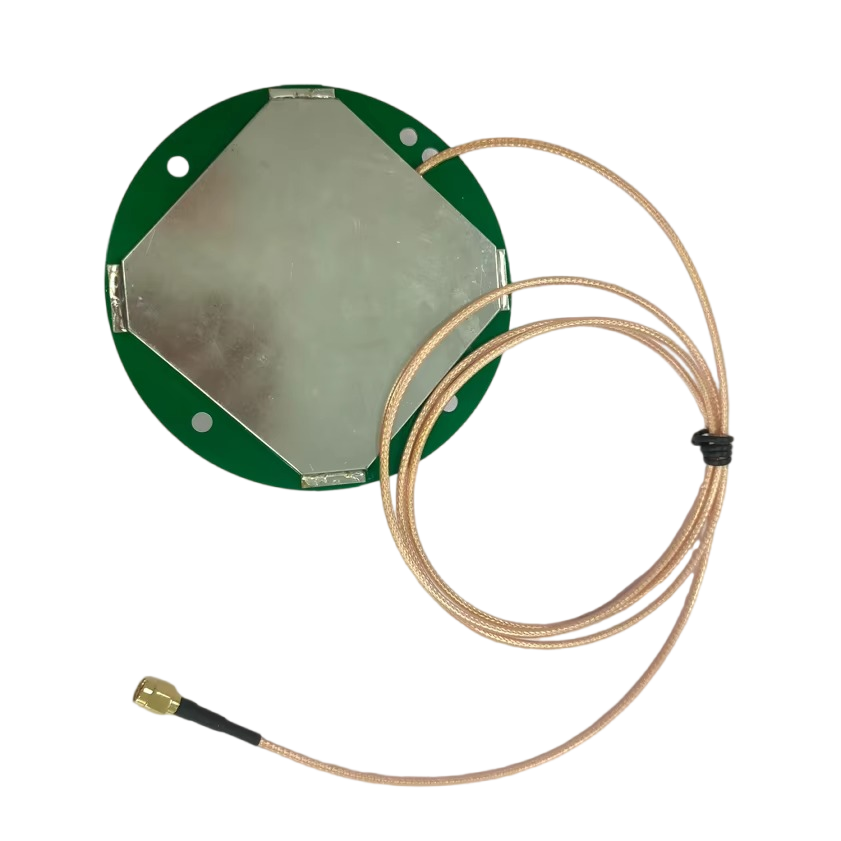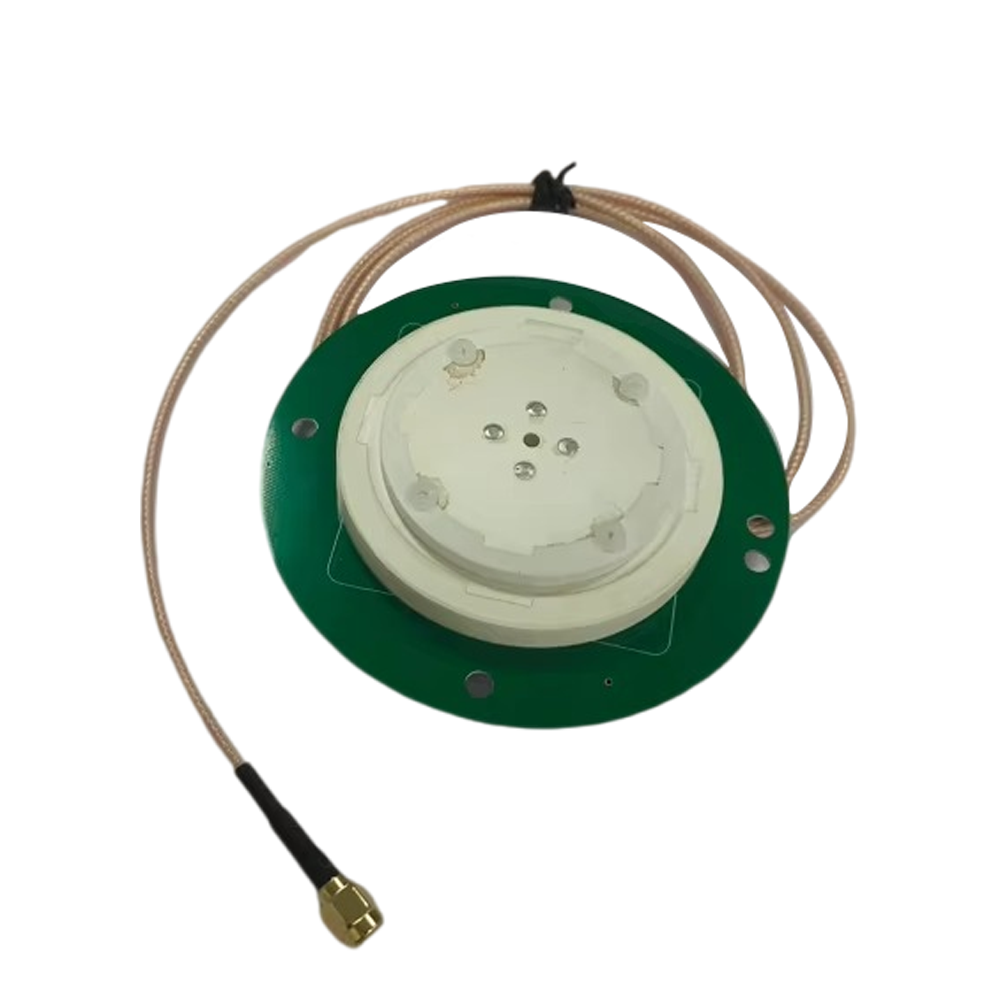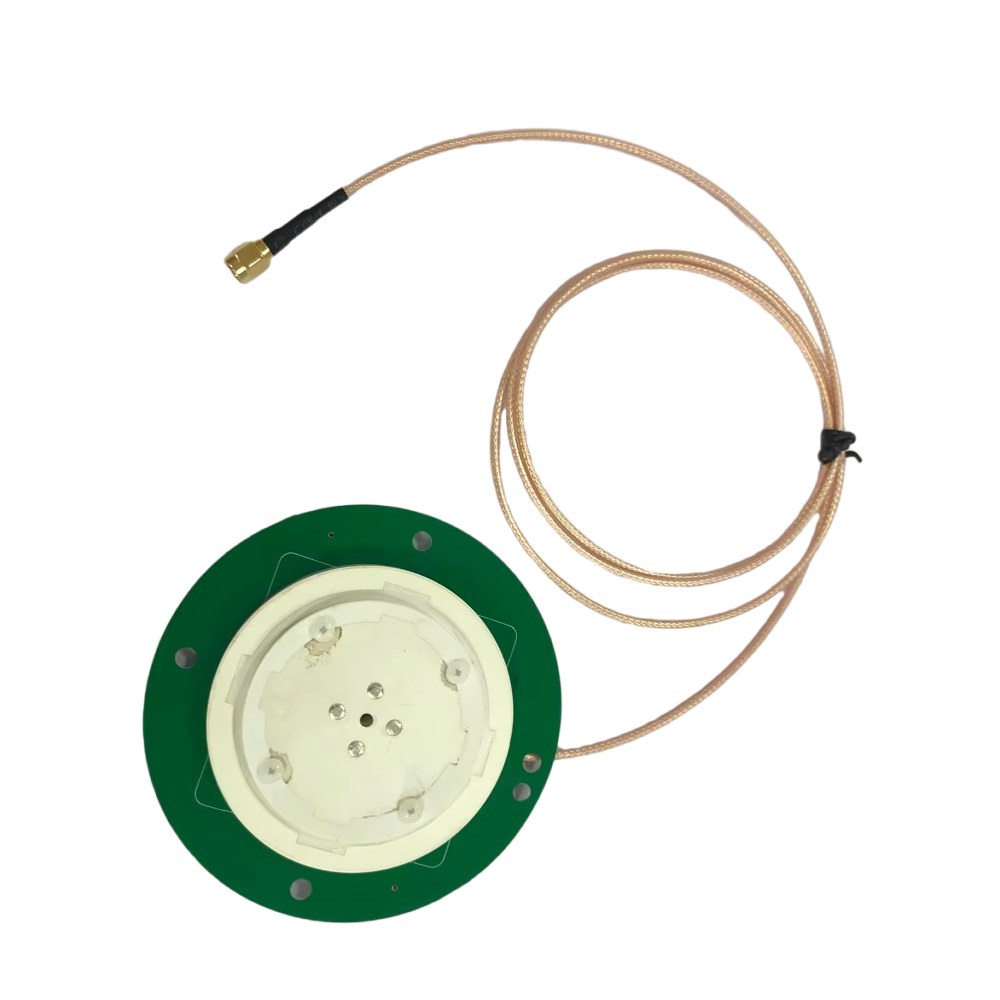Overview
The automotive industry’s shift toward Level 4/5 autonomy and connected vehicle ecosystems has driven demand for these antennas. For instance, the Harxon HX-CSX771 multi-band antenna supports L1/L2/L5 bands with a compact, aerodynamic design, while the NovAtel FlexPak6 integrates RTK correction engines for low-latency positioning. Paired with high-channel-count receivers (e.g., 1,000+ channels), these antennas ensure robust performance in urban canyons, tunnels, and dense foliage, where traditional GNSS fails.
The global automotive GNSS antenna market is projected to grow at a CAGR of 12.3% through 2030, fueled by regulations mandating ADAS in passenger vehicles and the rise of shared mobility services. This overview explores the technological foundations, design innovations, and emerging applications of multi-band RTK car antennas, highlighting their role in enabling safer, more efficient transportation systems.
Design and Construction
2.1 Antenna Architecture
Multi-band RTK car antennas balance compactness, gain, and environmental resilience to meet automotive requirements:
Patch Antennas: Dominate automotive applications due to their low profile (<10 mm height) and multi-band capability. For example, the Harxon HX-CSX771 uses a stacked patch design with a ceramic substrate to achieve dual-band (L1/L5) or triple-band (L1/L2/L5) operation with a peak gain of 4–5 dBi.
Helical Antennas: Used in rooftop installations for UAVs or heavy-duty vehicles, offering omnidirectional coverage and robustness against vibrations.
Multi-Feed Point Design: Antennas like the Tallysman TW3770 incorporate separate feeds for each frequency band, reducing intermodulation distortion and improving multipath rejection by up to 10 dB compared to single-feed designs.
2.2 Integration with RTK Receivers
Modern automotive RTK modules integrate antennas with high-performance receivers and correction engines:
Receiver Channels: The u-blox ZED-F9K supports 1,000+ channels, enabling simultaneous tracking of GPS, GLONASS, Galileo, and BeiDou signals. This redundancy ensures continuous operation even if some satellites are obscured.
RTK Engine: Processes carrier-phase measurements at 20–50 Hz, applying RTCM 3.X corrections to resolve integer ambiguities in <5 seconds under open-sky conditions.
Inertial Navigation Fusion: Advanced receivers like the Septentrio AsteRx-m3 Pro combine RTK with IMU data to maintain accuracy during GNSS outages (e.g., tunnels), achieving <0.2 m drift over 30 seconds.
2.3 Environmental and Regulatory Compliance
Automotive antennas must meet stringent standards:
ISO 16750: Certifies resistance to vibration, shock, and thermal cycling (-40°C to +85°C).
IP67/IP69K: Waterproof and dustproof enclosures protect against car washes, rain, and road debris.
FCC/CE Compliance: Ensures electromagnetic compatibility (EMC) with vehicle electronics.
For example, the Antcom G8 antenna for autonomous trucks features a ruggedized aluminum housing and conformal coating to prevent corrosion in harsh environments.
Working Principles
3.1 RTK Correction Mechanism
RTK achieves centimeter-level accuracy by resolving carrier-phase ambiguities in real time:
Base Station Setup: A fixed ground station (or virtual reference station, VRS) transmits raw GNSS measurements (carrier phase, pseudorange) to the vehicle via 4G/5G or LTE.
Double Differencing: The vehicle’s RTK receiver subtracts its measurements from the base station’s to eliminate clock errors, ionospheric delays, and tropospheric effects.
Ambiguity Resolution: The receiver uses least-squares adjustment to constrain ambiguities to integer values, typically achieving a "FIX" solution within 2–10 seconds.
3.2 Multi-Band Advantages
Ionospheric Correction: Dual-frequency (L1/L2) or triple-frequency (L1/L2/L5) measurements enable direct computation of ionospheric delays, reducing vertical errors by up to 50%.
Multipath Mitigation: Higher frequencies (e.g., L5 at 1176.45 MHz) have narrower bandwidths, making it easier to filter reflected signals from buildings or road infrastructure.
Faster Convergence: Multi-band receivers effectively "see" 1.5× more satellites than single-band systems, accelerating ambiguity resolution by 40–60% in urban environments.
3.3 PPP-RTK Hybridization
Some antennas support Precise Point Positioning (PPP) combined with RTK (PPP-RTK), which uses state-space corrections for satellite clocks, orbits, and ionospheric parameters. This extends RTK accuracy to global scales but requires longer convergence times (5–15 minutes) compared to local RTK.
Advantages and Challenges
-
4.1 Advantages
Centimeter-Level Accuracy: Essential for lane-level positioning, autonomous parking, and platooning.
Redundancy: Multi-constellation support ensures continuity of operations if one GNSS system fails.
Low Latency: RTK corrections delivered via 5G reduce latency to <50 ms, critical for real-time decision-making in autonomous vehicles.
Compact Form Factors: Patch antennas enable integration into shark-fin housings or roof panels without aerodynamic penalties.
4.2 Challenges
Base Station Dependency: RTK requires a nearby base station or NTRIP subscription, limiting use in rural areas.
Signal Obstruction: Vehicle roofs and bridges can block signals, necessitating multiple antennas or 3D positioning algorithms.
Cost: High-end antennas like the Septentrio mosaic-X5 cost
1,500–
3,000, restricting adoption in mass-market vehicles.
Thermal Management: Antennas mounted on hot surfaces (e.g., engine bays) require heat sinks or thermal pads to prevent detuning.
Conclusion
-
5. Applications and Future Trends
5.1 Current Applications
Autonomous Driving: Level 4/5 vehicles use RTK for lane-keeping, obstacle avoidance, and V2X communication.
ADAS: Features like adaptive cruise control (ACC) and lane departure warning (LDW) rely on RTK for <0.5 m accuracy.
High-Precision Mapping: Fleet vehicles equipped with RTK antennas collect sub-meter road data for HD maps used by autonomous systems.
Shared Mobility: Ride-hailing services use RTK to optimize vehicle routing and reduce ETA errors.
5.2 Future Trends
AI-Driven RTK: Machine learning will optimize ambiguity resolution and error modeling, reducing convergence times to <1 second.
5G/6G Integration: Ultra-low-latency networks will enable real-time NTRIP corrections without local base stations, expanding RTK coverage to remote regions.
Quantum GNSS: Emerging quantum sensors promise sub-millimeter accuracy by exploiting entangled photons for noise-resistant measurements.
Mass-Market Adoption: Predicted 25% CAGR in automotive RTK modules through 2030 will drive innovations in low-cost, high-volume manufacturing (e.g., $100 antennas for economy cars).
Multi-band RTK car antennas are redefining automotive navigation by delivering centimeter-level positioning accuracy essential for autonomous driving and ADAS. Their integration of advanced antenna designs, multi-constellation support, and RTK correction engines addresses the industry’s demand for reliability, precision, and environmental resilience. While challenges like base station dependency and cost persist, trends such as AI-driven RTK, 5G integration, and quantum sensing promise to overcome these barriers, unlocking new applications in smart cities, connected logistics, and next-generation mobility.
As the automotive sector transitions toward full autonomy, manufacturers must prioritize cost reduction, miniaturization, and interoperability to ensure these technologies reach their full potential. The future of vehicle navigation lies in the seamless fusion of multi-band RTK with emerging technologies, ushering in an era of ultra-precise, fully autonomous transportation.




































































 Language
Language
 En
En Cn
Cn Korean
Korean

 Home >
Home > 







 18665803017 (Macro)
18665803017 (Macro)













